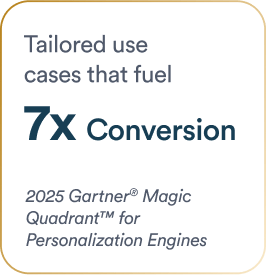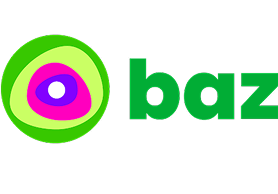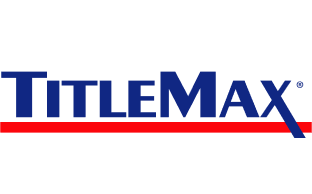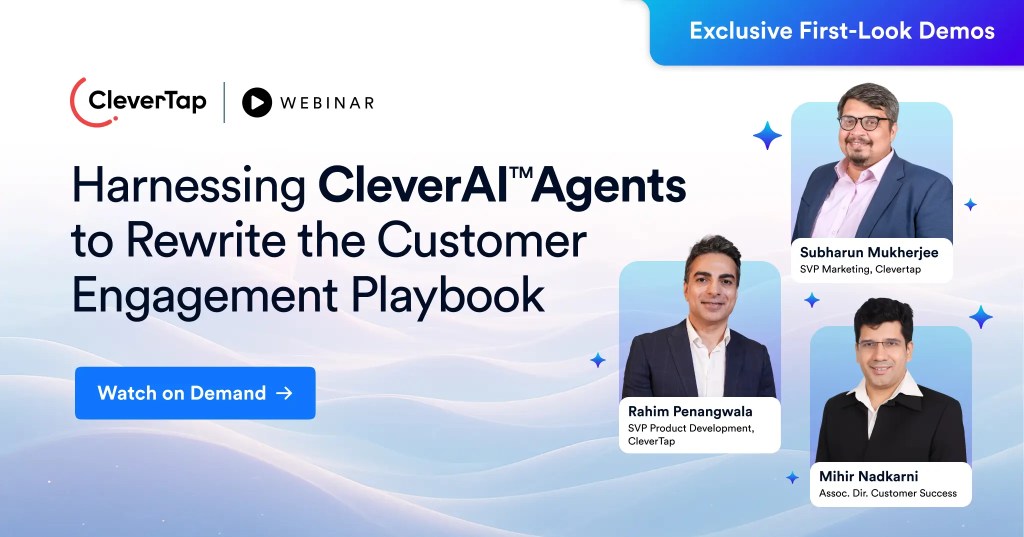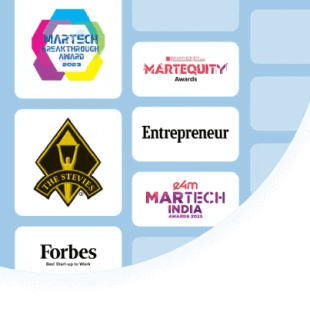The use of AI in marketing has exploded in recent years. From generating hyper-personalized content at scale to orchestrating entire engagement journeys with prompts, AI has redefined what’s possible.
In 2025, AI has moved from experimentation to mainstream adoption. However, as use cases multiply, particularly with the rise of agentic AI systems capable of autonomous decision-making, so do the ethical risks. Issues such as bias, customer manipulation, and the spread of misinformation are no longer hypothetical – they are real, pressing challenges that must be addressed before they snowball into a full-blown crisis.
For brands, the stakes are clear: misuse of AI can quickly escalate into reputational damage, regulatory scrutiny, and erosion of consumer trust.
Understanding the Risks: Ethical Concerns of AI Use in Marketing
In the rush to embrace AI technologies, marketers should not ignore the ethical risks involved:
1. Data Security and Privacy
Marketing relies on vast quantities of consumer data. When AI systems process this information, the line between personalization and intrusion can blur. Unauthorized data collection, poor encryption practices, and secondary/tertiary use of data without consent can all violate trust.
While privacy regulations, such as GDPR, CCPA, and DPDP, are in place to protect customer data and sensitive information, brands must also undertake proactive measures to ensure transparency, compliance, and protection against misuse. What’s key is to ensure personalization feels helpful, not invasive.
Takeaway for Marketers
- Implement privacy-first data practices by anonymizing personal data and minimizing unnecessary data collection.
- Monitor data use and outflow, especially while sharing with AI models and third parties.
- Ensure clear consent mechanisms and opt-out options are provided to the end-users.
- Ensure all AI-powered marketing platforms comply with global and regional data protection regulations as well as internal data governance frameworks.
- Invest in privacy-focused martech tools that prioritize secure storage and ethical data usage.
2. Data Bias Challenges
An AI model trained on skewed data will include biases/prejudices and can inadvertently target or exclude groups. This can (and has) resulted in alienating certain user segments, offending, and even hurting users and customers. Such behaviour by AI systems also exposes companies to legal, financial, and ethical backlash.
For marketers, bias doesn’t just risk compliance issues; it can mean losing customers, and thus revenue. Setting ethical guardrails in place and conducting frequent audits of the outputs of AI systems included in the martech stack is critical to safeguarding inclusivity.
Takeaway for Marketers
- Use diverse and representative datasets to train AI models and reduce bias at the source (or ensure that third-party martech platform providers follow similar practices).
- Conduct regular bias audits to identify and fix skewed patterns.
- Collaborate with data scientists and engineers to implement fairness checks in campaign optimization tools.
- Run A/B tests across diverse demographics to ensure campaigns resonate fairly across audiences.
3. Transparency and Explainability
Transparency in AI-powered marketing must be viewed from two perspectives: the marketer’s and the customer’s.
For marketers leveraging AI-driven tools, the challenge begins with understanding how decisions are made. When platforms operate without embedded explainability, it becomes difficult to interpret why an algorithm prioritized a specific audience, recommended certain content, or optimized a campaign in a particular way. This lack of clarity also raises questions about accountability: if an AI-driven decision backfires or causes loss or harm, who takes responsibility – the marketer, the vendor, or no one?
From the customer’s perspective, transparency is just as crucial. People want to know whether they are viewing AI-generated content or not, when and how AI is influencing their choices, and on what basis. If a product is being recommended, users should have optional visibility into the “why” behind it.
By making both the decision-making process and AI’s role visible, brands reduce skepticism, encourage informed engagement, and position themselves as responsible innovators.
Takeaway for Marketers
- Select tools with a built-in explainability feature, which provides visibility into how outputs and recommendations are generated.
- Include “Why You See This” tags or disclosures to explain AI-driven recommendations and content.
- Train internal teams on AI explainability so marketers can confidently answer customer concerns.
- Build clear accountability frameworks that define roles when AI-driven actions lead to unintended outcomes.
4. Meaningful Personalization vs. Manipulation
There is a very fine line between helpful nudges and manipulative persuasion. AI-powered hyper-personalization, if left unchecked, can overstep the line and exploit behavioral vulnerabilities.
Ethical marketing requires a balance, empowering consumers with choice rather than steering them into decisions that serve the brand more than the individual. Marketers should ensure that the AI-powered capabilities respect consumer autonomy by offering choice and control, not coercion.
Takeaway for Marketers
- Design opt-in personalization experiences rather than forcing hyper-targeted campaigns by default.
- Avoid dark patterns (deceptive UX/UI practices) that manipulate consumer behavior.
- Test personalization models to ensure recommendations serve consumer interests, not just brand goals.
- Create ethical review boards comprising data scientists, AI experts, security experts, and legal experts to develop guardrails for AI use and evaluate high-impact AI campaigns before launch.
5. Synthetic Content, Hallucinations, and Brand Misalignment
AI-generated deepfakes, synthetic voices, impersonation, or fabricated testimonials present alarming risks in marketing. While these tools can drive creativity, they also carry the potential for deception, eroding the authenticity consumers expect. Furthermore, AI hallucinations – AI models generating outputs that are incorrect, irrational, or factually untrue – can mislead unsuspecting customers, creating challenges for both authenticity and trust.
Human oversight plays a critical role here. By keeping humans in the loop to review, reinforce, validate, and contextualize AI-generated content, marketers can balance the efficiency of automation with the responsibility of ethical communication.
Takeaway for Marketers
- Set strict verification processes for all AI-generated content before publishing.
- Use AI content detectors and fact-checking tools to identify hallucinations or fabricated claims.
- Establish brand alignment guidelines to ensure AI-generated outputs reflect the company’s tone and values.
- Flag AI-generated creative outputs transparently where necessary, especially in paid campaigns.
- Maintain a human-in-the-loop system for all high-stakes communications, such as product claims or testimonials.
Ethical Frameworks and Guidelines
Global discussions on AI ethics have led to the creation of frameworks and regulations that can guide marketers. These include:
- UNESCO’s Recommendation on the Ethics of Artificial Intelligence underscores human rights, inclusivity, and sustainability.
- OECD’s AI Principles focus on inclusive growth, human rights and democratic values, transparency and explainability, accountability, and robustness.
- The European Union’s AI Act emphasizes risk-based governance, categorizing AI use cases by potential harm.
These frameworks and guidance, however, can enable ethical AI, but cannot enforce it. True responsibility begins with a company’s culture, values, and intent. Without them, every guideline remains meaningless.
That said, it is encouraging to see that it’s not just regulatory bodies and standard-setting agencies shaping the conversation around ethical AI. Forward-looking companies, including the likes of IBM, Microsoft, Google, and others, are proactively establishing their internal frameworks and policies to ensure responsible and transparent AI adoption.
Read our blog to learn about the principles that guide AI innovation at CleverTap. Read Now.
For marketers, these frameworks serve as more than compliance checklists – they are a blueprint for building trust. By aligning AI practices with internationally recognized standards and internal frameworks, brands not only reduce regulatory risk but also signal to customers that ethical responsibility is a core brand value.
Ethical AI: Shaping the Future of Marketing
AI offers marketers unprecedented opportunities to connect with consumers in meaningful, personalized ways. Yet, without a strong ethical foundation, these opportunities risk being overshadowed by breaches of trust, loss of credibility, and reputational harm.
By recognizing the risks, adopting globally recognized ethical frameworks, and embedding best practices into operations, companies can harness AI responsibly. The future of marketing lies not just in intelligent automation but in ethical engagement – where innovation and integrity move forward hand in hand.
Mrinal Parekh 
Leads Product Marketing & Analyst Relations.Expert in cross-channel marketing strategies & platforms.
Free Customer Engagement Guides
Join our newsletter for actionable tips and proven strategies to grow your business and engage your customers.




